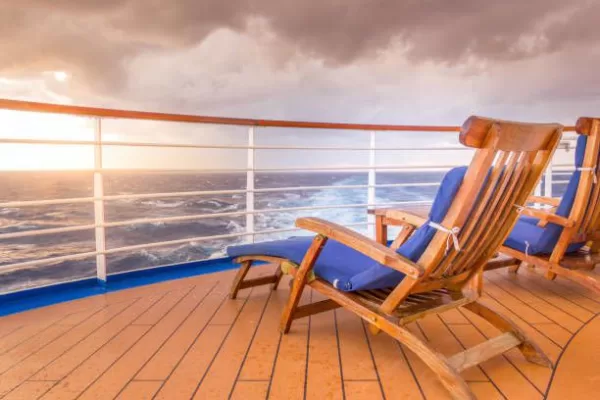|
Getting your Trinity Audio player ready...
|
Table of Contents
Vacations- What is Work-Life Balance?
Work-life balance refers to the equilibrium or harmony between a person’s professional life (work) and personal life (life outside of work). It’s the concept that individuals should be able to manage their career and job responsibilities while also having time for their personal and family lives, leisure activities, and self-care. Achieving a healthy work-life balance is important for overall well-being and can have significant physical, mental, and emotional benefits.
Key aspects of work-life balance include:
– Time Allocation: Balancing the time spent on work-related tasks and personal activities, ensuring that neither overshadows the other.
– Prioritization: Identifying and prioritizing what matters most in both work and personal life to allocate time and energy effectively.
– Boundaries: Establishing clear boundaries between work and personal life to prevent work from encroaching on personal time, and vice versa.-Flexibility: Having the flexibility to adjust one’s work schedule or workload to accommodate personal needs or emergencies.
-Stress Management: Managing stress and preventing burnout by taking breaks, practicing self-care, and seeking support when needed.
– Quality of Life: Striving for a fulfilling life that includes meaningful work and enjoyable personal experiences.
Achieving work-life balance can vary greatly from person to person, as it depends on individual priorities, career demands, and personal circumstances. It’s a continuous process that may require adjustments over time. Some people may find balance by working fewer hours, while others may focus on optimizing their productivity during work hours to have more quality time outside of work.
Employers also play a role in promoting work-life balance by offering flexible work arrangements, encouraging employees to take vacation time, providing resources for stress management, and fostering a culture that values work-life balance.
Ultimately, work-life balance is about creating a sustainable and harmonious life that allows individuals to meet their professional and personal goals while maintaining their physical and mental well-being.
How to make the right proportion between workload and leisure time?
– Set clear boundaries: Define your working hours and stick to them, separate work and leisure time.
– Prioritize: Focus on completing the most important tasks first, then determine which tasks can be done later or delegated.
– Eliminate distractions: Turn off notifications, limit social media use, and create a quiet and focused workspace.
– Use time management techniques: Make a to-do list, use a calendar, and consider using productivity tools.
– Take breaks: Regular breaks can help refresh your mind, increase focus, and reduce stress.
– Practice self-care: Engage in activities that bring you joy and relaxation, such as exercise, hobbies, and spending time with loved ones.
– Seek balance: Try to find a balance that works for you and allows you to achieve your work goals while also taking care of your physical and mental well-being.
What are the more common vacation types?
Vacations come in various forms to cater to different preferences and interests. Here are some common vacation types:
– Beach Vacation: Relaxing on a beach, swimming in the ocean, sunbathing, and enjoying water sports are typical activities during a beach vacation. Popular destinations include tropical islands, coastal cities, and seaside resorts.
– City Break: Exploring urban destinations known for their cultural attractions, historical sites, shopping, dining, and nightlife. Cities like Paris, New York, Tokyo, and Rome are popular choices for city breaks.
– Adventure Vacation: For those seeking adrenaline and excitement, adventure vacations offer activities like hiking, mountain biking, rock climbing, zip-lining, white-water rafting, and more. Destinations like Patagonia, Nepal, Costa Rica, and New Zealand are known for adventure tourism.
– Cultural Vacation: Immersing oneself in the local culture, history, and traditions of a destination. This may involve visiting museums, historical sites, attending local festivals, and trying authentic cuisine.
– Cruise Vacation: Taking a cruise ship journey to explore multiple destinations. Cruises can be ocean or river-based and offer various onboard amenities and shore excursions.
– Safari Vacation: Going on a safari to observe wildlife in their natural habitat. African countries like Kenya, Tanzania, South Africa, and Botswana are well-known safari destinations.
– Mountain Retreat: Escaping to mountainous regions for tranquility, fresh air, and outdoor activities like skiing, snowboarding, hiking, and simply enjoying the scenic beauty.
– Wellness Retreat: Focusing on health and relaxation through activities like yoga, meditation, spa treatments, and healthy eating. Destinations like Bali, Thailand, and Sedona are popular for wellness retreats.
– Road Trip: Traveling by car or motorhome to explore various destinations along a chosen route. Road trips offer flexibility and the opportunity to discover hidden gems.
– Culinary Vacation: Exploring a region’s cuisine and culinary traditions. This may involve taking cooking classes, visiting local markets, and dining at renowned restaurants.
– Historical Vacation: Visiting places with significant historical importance, such as ancient ruins, castles, and UNESCO World Heritage Sites.
– Family Vacation: Tailored for families with activities and accommodations suitable for children, such as theme parks, beach resorts, and family-friendly destinations.
– Solo Travel: Embarking on a journey alone, allowing for personal growth, self-discovery, and the freedom to choose one’s own itinerary.
– Honeymoon: A special vacation for newlyweds to celebrate their marriage and create lasting memories together. Honeymoon destinations often include romantic getaways like tropical islands or secluded resorts.
– Backpacking: Traveling on a budget and exploring multiple destinations with a focus on adventure, cultural immersion, and connecting with fellow travelers.
– Luxury Vacation: Indulging in upscale accommodations, fine dining, and exclusive experiences in high-end destinations.
The type of vacation chosen often depends on individual interests, budget, time available, and the desired travel experience. Some people may prefer a combination of these vacation types or alternate between them to explore a variety of destinations and experiences.
InCruises is a vacation and travel club that offers its members exclusive benefits and discounts on travel and leisure activities. The company operates using a multi-level marketing (MLM) business model and offers a financial plan that promises to allow members to earn money while they travel.
it’s important to thoroughly research and understand the potential and benefits before making a decision.

Related Posts
-
Financial Stability in an Ever-Changing World
Listen to the Discussion Financial Stability Meaning FAQ Financial stability refers to a state or condition in which a financial system, such as that of a country or an organization,…
-
The Online Dream Business
Listen to the Discussion what is a dream business? Table of Contents what is a dream business?A dream business is a business that aligns with your passions, values, and personal…
-
The Physical World And The Virtual World
The Physical World And The Virtual World Table of Contents What is the concept of the virtual world?The concept of a virtual world refers to a computer-generated, immersive, and interactive…
-
Independence in Individual Economy
Independence In Individual Economy Table of Contents In today's ever-evolving landscape, the rise of Artificial Intelligence (AI) has undeniably altered the fabric of society. With AI's remarkable ability to automate…




